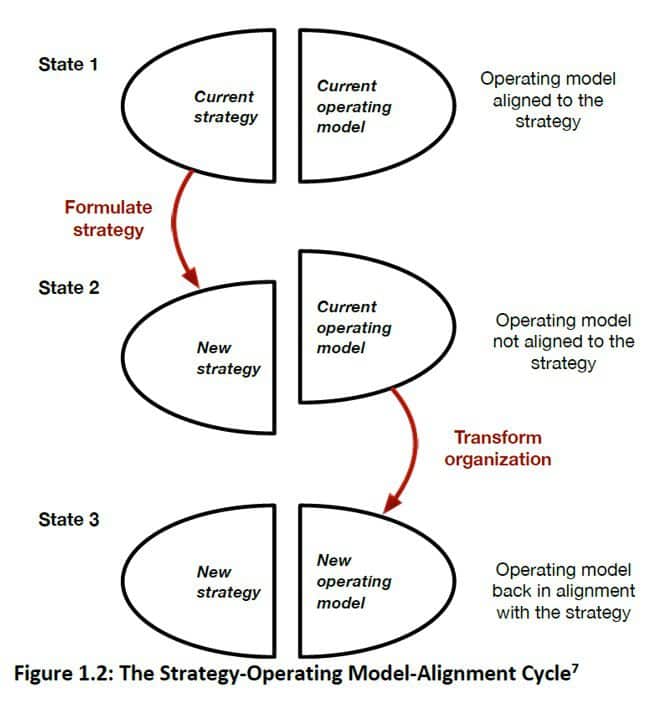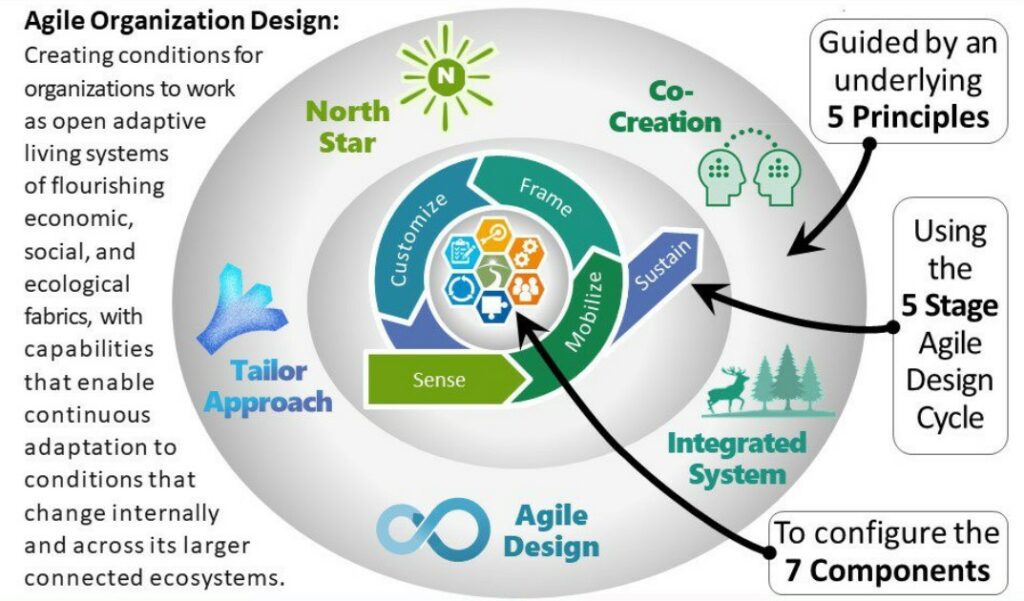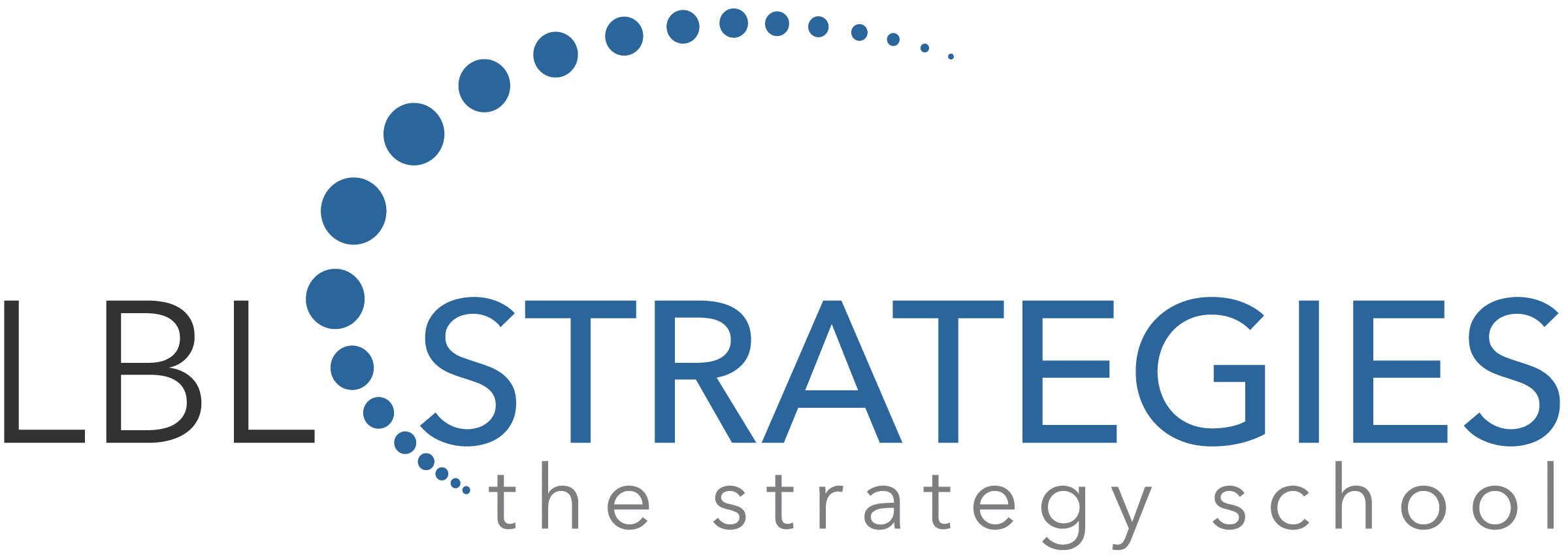An unprecedented level of discontinuous change[1] frames the strategic context most organizations navigate today. This reality shapes every aspect of strategy setting and execution. To create tangible value for customers and other stakeholders, there must be clear alignment of the organization’s strategy with its operating model. Aligning an operating model, including unit roles and individual roles to an organization’s strategy, is referred to as “Organizational Transformation.” It is a final determinant of overall successful alignment of the leadership, management, and operational teams with the organization’s strategy. [2]
Just as any living organism adapts to an ever-changing environment, organizations must be able to quickly transform their design and operations as markets shift and new opportunities emerge. [3] In many ways, maintaining alignment of these two factors is the lubricant enabling leaders at all levels of the organization to open the hearts and minds of those working within their own living system to embrace continuous change.
Naturally, a problem often results here. A new strategy often results in changes to how work is completed, which can lead to a misalignment between the new strategy and the current functioning of the organization. See Figure 1.2 from IASP, BOK 3.0. [4]

The strategy office plays a significant and growing role in working with an organization’s leadership and human resources teams in translating strategy, strategy execution processes and two-way conversations into an agile organization design, an individual/shared accountability model, targeted employee job descriptions, and individual development plans.
Historically, the discipline of strategic management has not included disciplines such as organizational design or business architecture as primary components. In fact, the broader focus on organizational design (and now organizational transformation) has not been considered in scope heretofore. Fortunately, the International Association for Strategy Professionals has recognized this disconnect and addressed it in BOK 3.0.
Ultimately, the necessary degree of alignment requires development of a “transformation plan” which delineates and sequences the tactical projects needed to align the day-to-day operating model with the organization’s strategy, and implement them effectively. In the end, organizational design arranges for smaller teams to do the work necessary to implement an organization’s strategy while delivering high-quality customer and employee experiences effectively and efficiently.
The strategy professional’s emerging role includes enabling their team to evaluate its current organizational design/operating model, in terms of alignment gaps, and design a “to be” state and action plan to guide transformation.
Mastering Adaptive Organizational Design Certification

NEXT PROGRAM:
October 11-13, 18-20 & 25-27
1:00-4:30 p.m EST
Virtual via Zoom
Visit the Mastering Adaptive Organizational Design Certification page or email us to learn more or reserve your seat!
Mastering Agile Organization Design is offered in association with the George Washington University’s Center for Excellence in Public Leadership, part of the College of Professional Studies, and the Baldrige Foundation.
